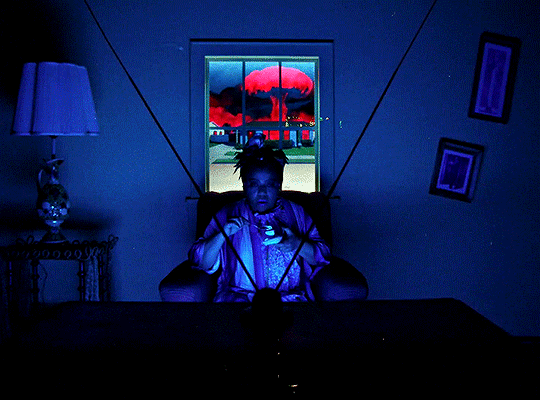
‘As a restless teenager living in Taiwan, Shu Lea Cheang often found solace in her university’s French Culture department. “I always tried to avoid school,” she says with a wry laugh, speak- ing over the phone from her home in Paris. “But Taiwanese filmmaking at that time wasn’t so good. It was mainly soap opera-type films… so I would go [there] and watch Jean-Luc Godard.”
‘It’s near impossible to put the 65-year-old into a box. As an artist, she’s built, hacked and adapted technology to fit her own activist agenda, earning a cult reputation in the process. When it comes to filmmaking, she’s made everything from political documentaries to sci-fi pornography. Whatever she feels like doing, she does.
‘A creative child growing up in Tainan, a small fishing village nestled away on Taiwan’s west coast, Shu Lea – the only member of her family interested in the arts – felt like a black sheep. So at just 15 years old she decided to relocate to the country’s capital, Taipei, alone. “I didn’t particularly feel lonely or anything,” she recalls. All she knew was that she was search- ing for her “own path” – nothing was going to get in her way.
‘After studying filmmaking, she stepped onto the industry’s career ladder and spent years training to become an editor. But soon grow- ing restless, she upped and left for New York, arriving at the height of the AIDS epidemic in the 1980s. “I feel like those were my formative years,” she says, her voice lifting at the memory. “It was very inspiring – it seemed like we were always on the street! We were all living in the East Village in these great communities, but it was the Reagan era – so we were dealing with a lot of issues.”
‘Exhibiting at the Whitney Museum, she won acclaim for her conceptual approach. It announced her as an exciting new name on the New York art scene. For Shu Lea, who hadn’t really thought about a career in art up until that point, it was a suitably unorthodox beginning. “It’s quite unusual,” she says, still sounding bewildered at the reception she received. “I didn’t go through the gallery route and I wasn’t particularly struggling, I just had these installation ideas. Suddenly – I’m an artist!”
‘As further opportunities presented them- selves and her portfolio began to grow, her desire to make work about uncomfortable political issues only grew stronger. In 1990, she flew to Beijing with a camera after martial law was declared and documented the two weeks of turmoil leading up to the Tiananmen Square Massacre. Six years later, she used a radar system to track a US military base and expose its violations against local women, the environment and land. (One such example is a 1995 case, in which three servicemen kidnapped, duct-taped and bound the hands of a 12-year- old local girl. Two of the men admitted to raping her, the third claimed he only pretended to do so out of fear.) Although the work was initially approved, Shu Lea faced administrative backlash when trying to move it to Tokyo. “In the end it did get shown,” she recalls. “But there was a lot of negotiation with the government.”
‘Working across a wide range of media – video, performance, installations, cyber-interfaces – Shu Lea’s art has continued to explore race, imperialism and power. It’s a multidimensional approach that’s seen her regularly using technology to imagine post-identity worlds. Her 1998 work, ‘Brandon’, is exemplary. A web project exploring the real-life rape and murder of transgender man Brandon Teena in his home state of Nebraska, it was the first internet art piece commissioned and acquired by New York’s Guggenheim Museum.
‘She returned to similar technological themes with ‘3×3×6’, an installation which used facial recognition techniques to scramble visitors’ faces, making them cross-racial, cross-gendered and ultimately resistant to surveillance. “There’s this idea that queer people and technology don’t mix – we just do the make-up, right?” Shu Lea laughs out loud before returning to her point: “But we have a tool which we can use in a subversive way. I really want to advocate for people not to be intimidated. We have to use it, we have to hack it.”
‘Today, Shu Lea describes herself as a digital nomad. “I started to travel a lot – I became dedicated to not having a physical residence,” she says, matter-of-factly. This pragmatic approach sums up Shu Lea. She is disarmingly charismatic, self-aware and fiercely intelligent – comfortable with her own status as an art world outlier.
‘Her work is the kind that smashes boundaries rather than nudging politely. While such a commitment to resistance has cost her a mainstream audience, it’s one she remains undecided about courting. “The premiere of [‘cypherpunk’ science-fiction film] FLUIDØ had about 60 people walk out,” she recalls with a laugh. “Maybe it’s naïve on my part, but I’m only showing naked bodies, masturbation. The fact that we can’t even look at our own bodily functions… it’s a revelation.”
Despite this, she wants her work to be popular – but only a little. “When a stamp of approval is put on my work, it legitimates it and brings it to the public. But I know I have to somehow remain marginal, with my own edge.” This is a precarious line to walk, especially in today’s conservative political climate – but Shu Lea’s instincts have rarely failed her.’ — Jake Hall
____
Stills



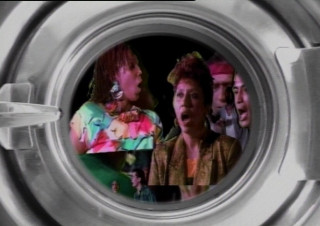


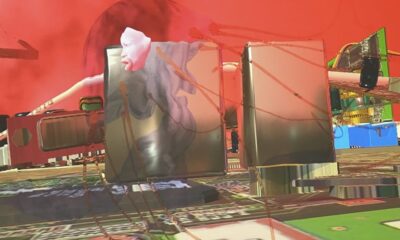
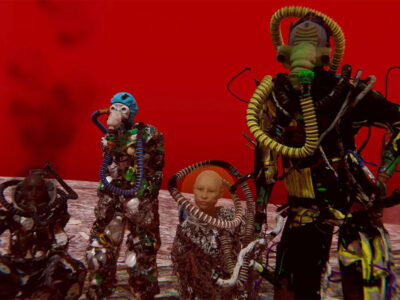
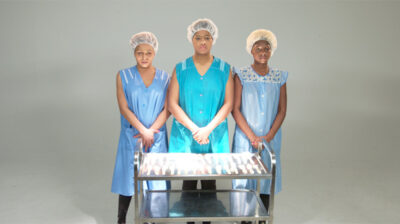
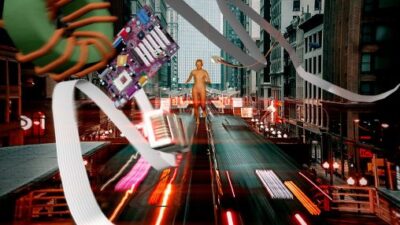
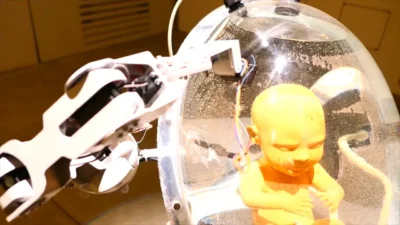
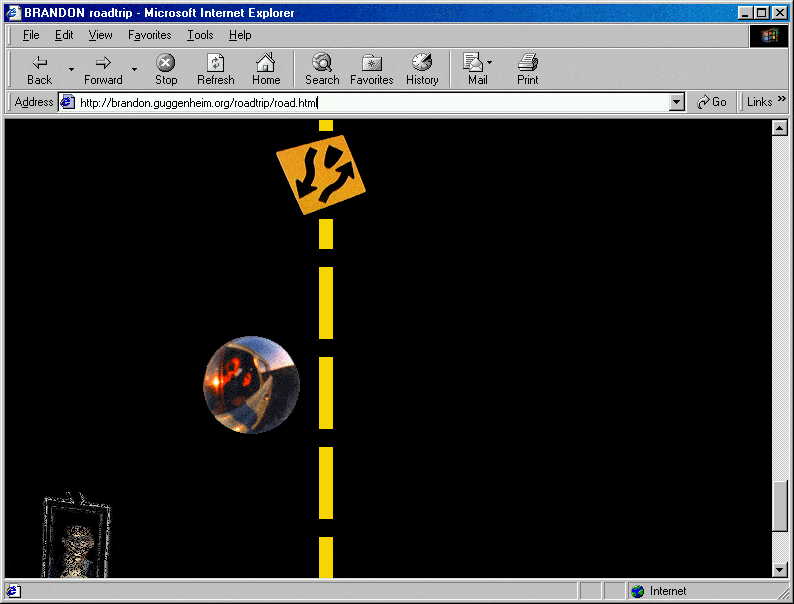
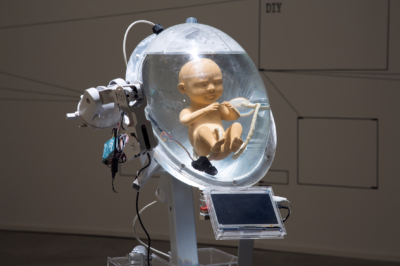

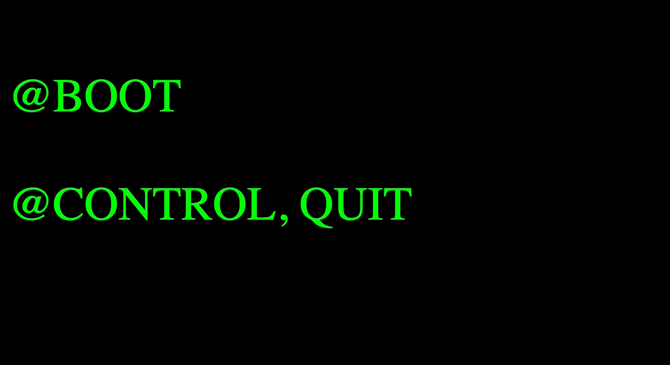
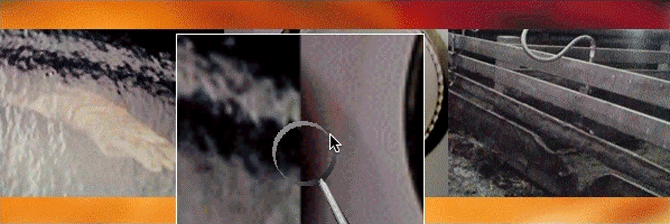
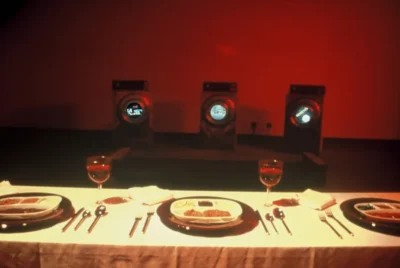
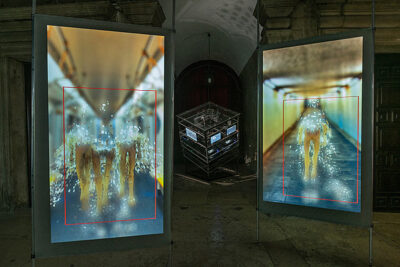
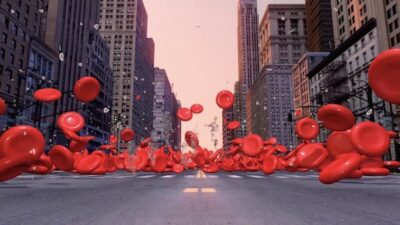

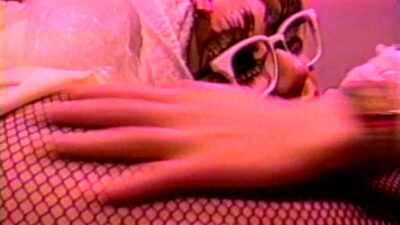
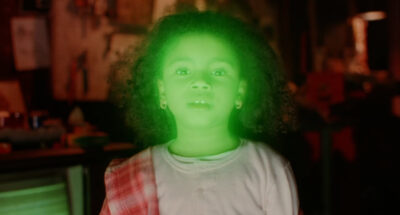
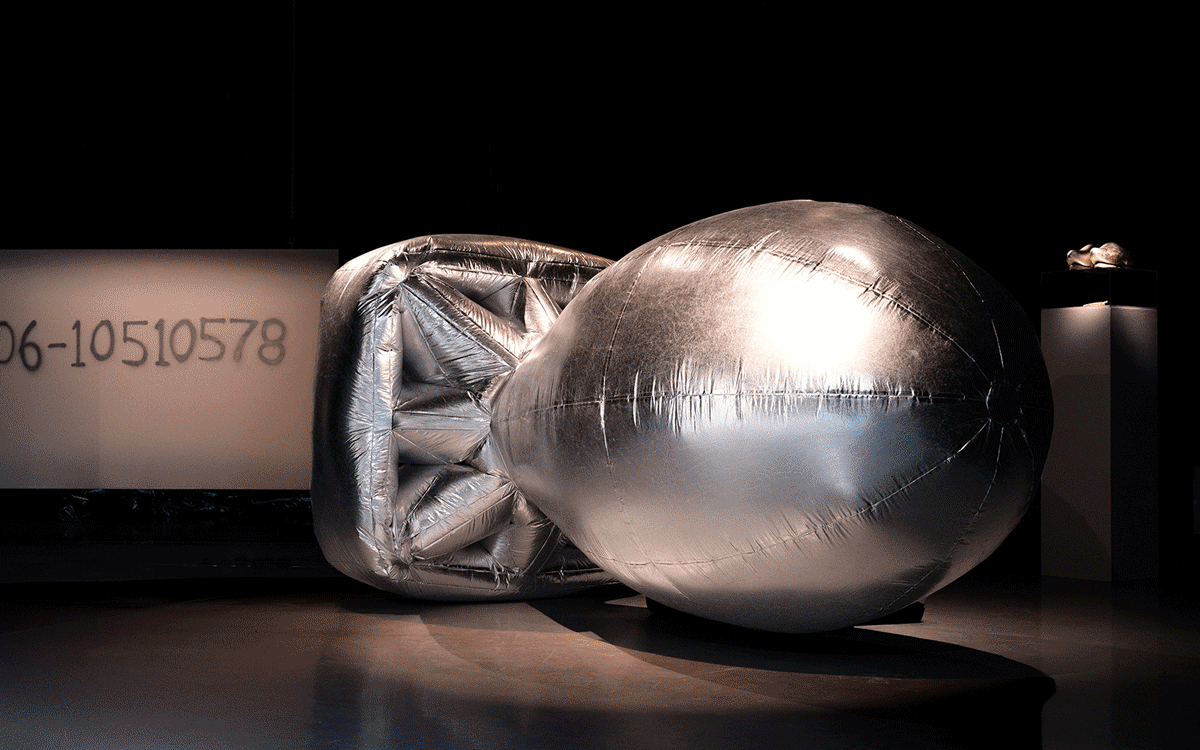
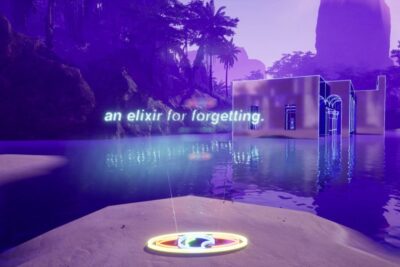

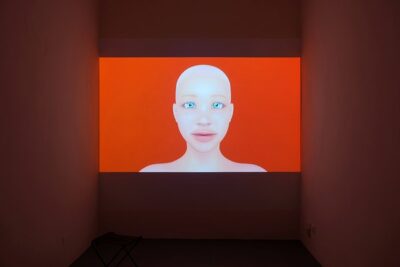

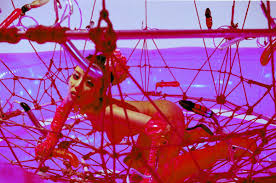
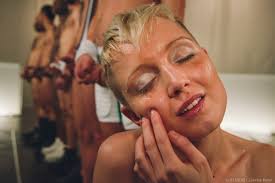



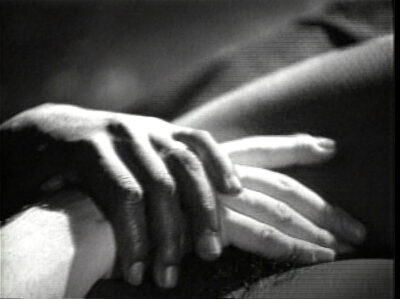
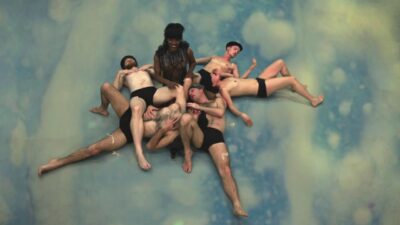
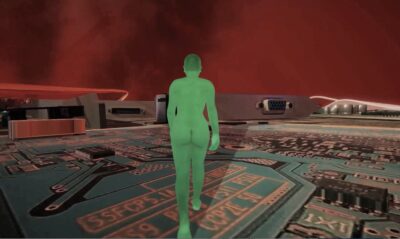
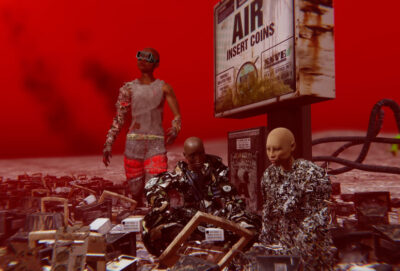

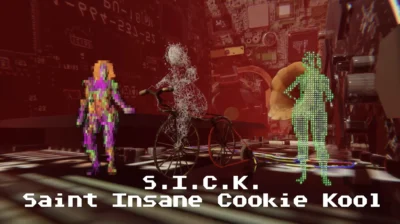
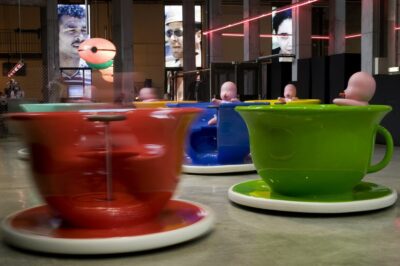
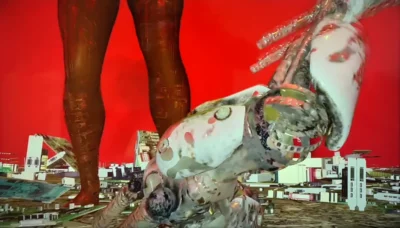
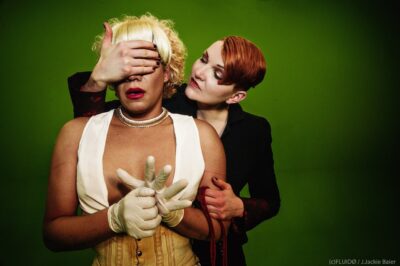
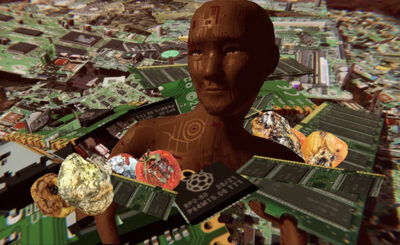

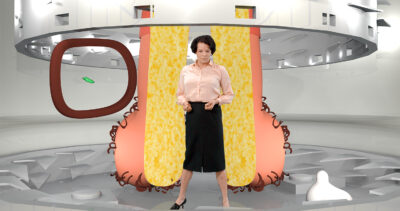
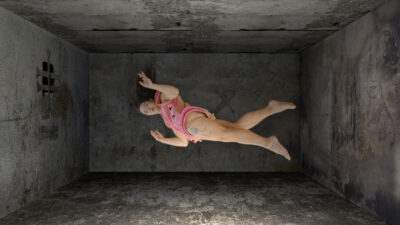
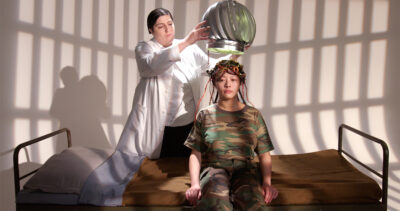
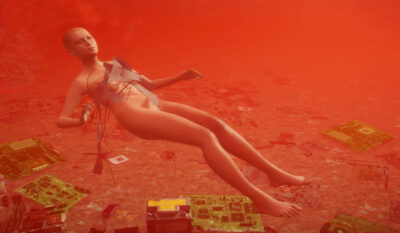
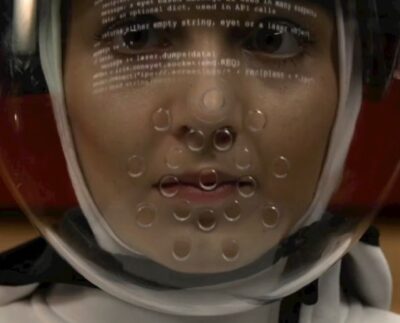
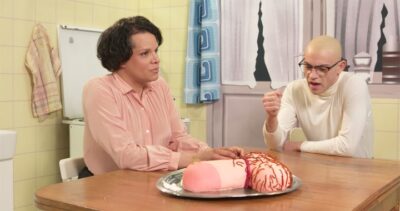


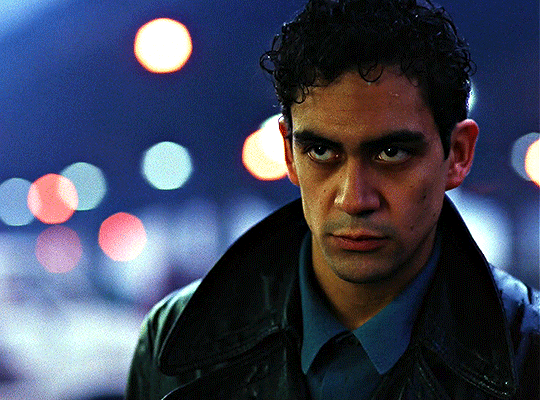
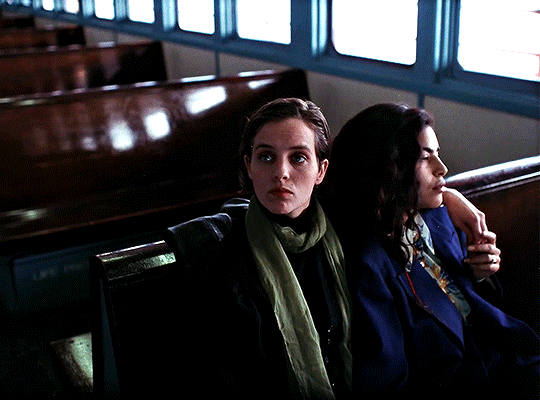
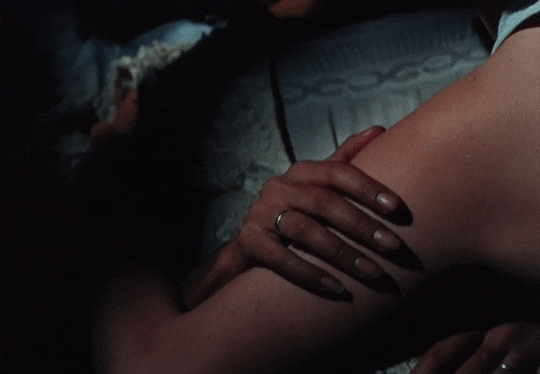
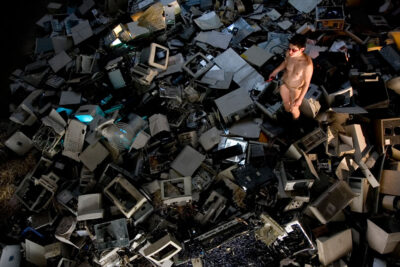
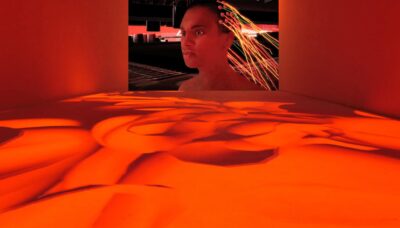
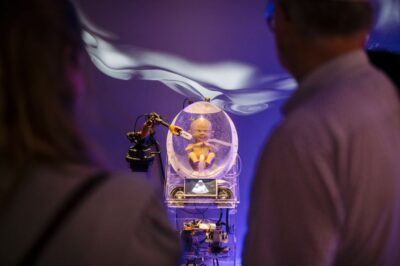

____
Further
Shu Lea Cheang @ Wikipedia
Shu Lea Cheang @ Vimeo
SLC: CV & Links
SHU LEA CHEANG NAMED WINNER OF LG GUGGENHEIM AWARD
SLC @ IMDb
Shu Lea Cheang is making art that hacks the system
SLC @ Feral File
The New Sci-Fi Cinema of Shu Lea Cheang
SLC @ Video Data Bank
Resistance, Fish By Fish: Shu Lea Cheang
What is the question ? -* Shu Lea Cheang,…
SLC @ MUBI
Podcast: ART AND OBSOLESCENCE: Shu Lea Cheang
SLC @ Letterboxd
SHU LEA CHEANG: “Fictional installation toward Wifitopia”
SLC @ rhizome
Shu Lea Cheang’s Genre-Bending Affirmations
____
Extras
Shu Lea Cheang – ‘Art, Queer Technologies and Social Interference’
Shu Lea Cheang: 3x3x6 / Taiwan in Venice 2019
Welcome to BioNet by Shu Lea Cheang — Launch Event
________
Interview
from Spike Magazine
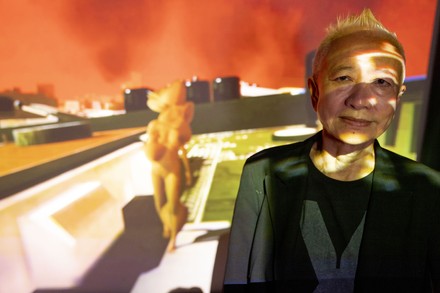
Patrick Kurth: You’ve called Fresh Kill a work of “eco-cyber-noia.” Can you describe the film under that rubric?
Shu Lea Cheang: For me, the film sums up my experience living in New York in the 80s. I was seeing how the garbage in Manhattan goes to Staten Island, to the Fresh Kills Landfill, and how in Taiwan, where I grew up, the government was dumping nuclear waste on Orchid Island, which is an offshore island where only aboriginal people live. And if you look at the whole global waste system, the developed countries were dumping toxic waste on the developing countries, mainly in Africa. Initially, I wanted to reverse this one-way circulation. I imagined this toxic fish would come back to America via a sushi restaurant.
Meanwhile, we were writing the script mainly in 1992, and I was surfing the Bulletin Board System (BBS), which was just becoming quite popular. People were using it to chat on different channels, a bit like any social media today. It was pre-internet, but you could feel that this border-crossing network communication was coming. In the film, Jiannbin [Abe Lin] hacks a red dial-up phone, and accidentally gets connected to the African Unity Network. I sensed the possibility of a global alliance, a networked resistance.
PK: There are two clear depictions of the Global South in the film. Orchid Island, which is grainy, tropical, a little sepia, is a dumping ground of nuclear waste. The African Unity Network is presented on TV in blue monotone and, at one point, communicates “STOP THE SHIPMENT.” How did you connect these two representations, one passive and the other agentic?
SLC: First of all, even in Orchid Island, indigenous people also demonstrated against the dumping – they rely on the water there to live! It was the same thing with Fresh Kills, which was so toxic when we were shooting there. Both places are real. In my imagination, the would-be hackers of the African Unity Network created a utopian version of resistance.
The quality difference in the film has to do with the media we used. In Taiwan, we shot in 16mm, whereas the African Unity Network was cut in with video materials. In New York, the main film was shot in 35mm to make a political statement, to say “I want to shoot in Hollywood’s medium” – it has the most density and texture.
PK: How did you formally bring the media activism of the 80s and 90s, which was responding to the mainstream depiction of HIV/AIDS or lack thereof, into a feature film?
SLC: I was quite involved with the street demonstrations in New York City in the 1980s. I feel like I passed the decade on the street, with a camcorder. It was the first time portable cameras became accessible, and the there were many video collectives founded. I was involved with Paper Tiger TV and Deep Dish TV, and there were also Not Channel Zero, Dyke TV, and ACT UP. We were eager to record our own documents of street movement.
The scene in Fresh Kill when the mother and daughter break into the television station refers to when three activists from ACT UP interrupted a CBS studio broadcast in 1991 yelling “Fight AIDS not Arabs!” There’s also zapping, or channel surfing, at a moment when broadcasting systems were boasting about having 100 channels on cable TV; you think you have all the choice, but you just keep mindlessly changing from one to the next. Along with cable TV, there was also public access TV, which, even if few people know about it in terms of art history or whatever, contributed to so many artists’ uses of the video medium. Even Richard Serra was using video, for a piece called Television Delivers People (1973). I made my own first video documentary, Trial for Tilted Arc (1989), from the public hearings about the takedown of Serra’s sculpture Tilted Arc (1981).
PK: Did you think there would be a natural affinity between new queer cinema and sci-fi?
SLC: “New queer cinema” was coined by B. Ruby Rich in 1992, first in the UK in Sight and Sound, then in the US in the Village Voice. Much later, she collected all these essays into a book, New Queer Cinema: The Director’s Cut (2003), and included her texts on my second feature, I.K.U. (2000), which was conceived as taking off from Blade Runner (1982). Actually, I was trying to engage Samuel Delaney to write the script with me, though in the end, it didn’t work out. So, I went to Tokyo, where science fiction is reality.
My films have always been diversely queer, in terms of race, gender and sexuality. Once, a distribution agent actually got upset with me. She said, “I can’t help you with your film because people just want a gay film or lesbian film, and this mixture of sexuality in your film is just not going anywhere.” I.K.U. is the same: It’s a crossover in terms of sex, not necessarily gay or lesbian. I was known for gender-hacking and genre-bending.
Only last year, when Project Native Informant suggested I could show my four feature films together, including FLUIDØ (2017) and U.K.I. (2023), did I begin seriously thinking I would call them sci-fi new queer cinema. I wasn’t intending to claim it as my genre, but now, I’m quite confident of the grouping, and it confirms that, over thirty years, besides making art, I have made four feature films.
PK: At different points in Fresh Kill, Miguel [Jose Zuniga] reads poems by Federico Garcia Lorca and from Dreamtigers (1960) by Jorge Luis Borges, and three family members – Claire [Erin McMurtry], Mimi [Laurie Carlos], and Honey [Nelini Stam] – share the name Mayakovsky. How did you want to situate poetry in relation to the other language in the film?
SLC: I did appropriate chats on various BBS channels, i.e. business transactions, buying and selling, into the script. Further, we scrambled the words people speak after eating the toxic fish – we mixed the dialogue backward and remixed.
The film script is credited to Jessica Hagedorn, who had just published her novel, Dogeaters (1990). Coming from a Filipino background, it challenged a racist perception of Filipinos. She didn’t create a script from nothing – I provided pretty much the whole structure and some of the dialogues. Most of the literary references came from her. She and I are were both involved with the downtown performance art scene, and we brought in many cameo appearances, i.e. Kate Valk, Ron Vawter of the Wooster group, Laurie Carlos, Robbie Mccauley, Karen Finley, Nicky Paraiso, Jimmy Durham, and Alva Rogers, among others.
PK: How was the response to Fresh Kill when it first came out? And do you hope the restored version will be received any differently?
SLC: Actually, the film was received okay! It premiered at Berlinale in 1994 and went on to quite a lot of film festivals. We had two 35mm prints circulating at that time, one in Europe, one in America. It was also released in the cinema, even if it was not the most popular film. I did get some good reviews, and eventually there were a lot of academic papers written about it. Last year, it was chosen by ARTnews as one of the 100 greatest artworks about New York City, and the Brooklyn Academy of Music showed it in 2022 as part of the “New York 90’s.” So I am in good company.
I just premiered the restored film at International Film Festival of Rotterdam to a really young crowd, and it was really positive. People tell me that they don’t feel it’s gotten old, that it’s still really in line with current issues, which is why I am taking it on a road trip across the US. I’m only looking for cinemas that can still project 35mm, either in museums or independent art houses. I know these old (medium) theaters still have community backing, where community gatherings, like town meeting, can be organized for post-screening dialogue about current issues, such as environmental racism.
PK: Are you going to travel with the film?
SLC: Of course! The 35millimeter print is in five reels. I think some people have this romanticism that I would take it on a road trip by myself, but I will travel with a driver who is also a filmmaker from Calarts, along with another young filmmaker from New Orleans. We are working on getting cinemas signed up for hosting the screenings, mapping out the routes. Perhaps I’m still quite naive, because I haven’t figured out how to rent a car, and I am just realizing that could be really expensive!
______________
13 of Shu Lea Cheang’s films & digital works
________
UKI (2023)
‘UKI grapples with institutional oppression, gender politics, social inequality, and pollution, and proposes queer visions of the future — thematics Cheang has been exploring for forty years. The film tells the story of Reiko — a decommissioned humanoid replicant — in the year 2060. GENOM Corporation developed Reiko to collect orgasm data. Discarded and dumped in the toxic wasteland of E-Trashville, Reiko is rebuilt, rebooted, and transformed with the help of other mutants, replicants, and E-Trashville residents. In a parallel timeline, in a city plagued by a viral infection and social unrest, customers at a local diner sip coffee and discuss current events. GENOM Corporation and their ads are ubiquitous, promising a solution and cure in exchange for access to their DNA and biodata. Meanwhile, they harvest orgasm data to create new pharmaceuticals to control the population. Will Reiko be able to stop GENOM’s devious plan?’ — LAS
Trailer
UKI – Viral Performance LIVE CODE LIVE SPAM
____________
Wonders Wander (2017)
‘Wonders Wander is a location based mobi-web-serial with four fictional episodes set in Madrid. Departing from the city’s Malasaña Barrio, which became known as Maravillas (Wonders) during La Movida Madrileña countercultural movement in the 1980s, Wonders Wander takes the wonders out of Malasaña to explore the off-the-mainstream nouveau queer generation that includes refugees, migrants, functional diversity, transfeminista, transfeminism, open family, subversive motherhoods, sustainable living, and the rise of auto-defense practices for self-empowerment.’ — Video Data Base
Trailer
____________
Fluidø (2017)
‘Set in the post-AIDS future of 2060, where the Government is the first to declare the era AIDS FREE, mutated AIDS viruses give birth to ZERO GEN – humans that have genetically evolved in a very unique way. These gender fluid ZERO GENs are the bio-drug carriers whose white fluid is the hypernarcotic for the 21st century, taking over the markets of the 20th century white powder high. The ejaculate of these beings is intoxicating and the new form of sexual commodity in the future. The new drug, code named DELTA, diffuses through skin contact and creates an addictive high. A new war on drugs begins and the ZERO GEN are declared illegal. The Government dispatches drug-resistant replicants for round-up arrest missions. When one of these government android’s immunity breaks down and its pleasure centers are activated, the story becomes a tangled multi-thread plot and the ZERO GENs are caught among underground drug lords, glitched super agents, a scheming corporation and a corrupt government. Check yourself in as a fluid junkie for a super hyper viral ride.’ — Rapid Eye Movies
Trailer

_____________
Baby Work (2012)
‘The installation designates the public visiting the gallery to collect and rearrange scattered keys and compose words into collective sonic expression. Active participants are the clone babies who are entrusted to store and retrieve ME-data.’ — Wikipedia
Excerpt
Excerpt
_____________
Baby Love (2005)
‘The installation consists of 6 large size teacups and 6 clone babies. Each teacup is an auto-driving mobile unit with spinning wheels allowing direction maneuver and speed variation. Each baby is a situated mac-mini engine with wifi linked to the net depository of shuffles and remixes of popular love songs.’ — PdT
in action
_____________
Baby Play (2001)
‘The installation employs a large scale table football field. Opposing rows of 22 ball players are replaced by human sized cloned locker babies. The tracking of ball movement retrieves ME-data (texts and sound) deposited in respective lockers.’ — zero1biennial
in action
_____________
I.K.U. – This is not LOVE – This is SEX (2000)
‘Through the use of fantastic exaggeration, with colorfully flamboyant and lascivious women and unreal Akihabara-esque technology, experimental helmer Shu Lea Cheang provides a critique of Western stereotypes of East Asia, most notably being the dragon lady in this softcore feature.’ — MUBI

Excerpt
_____________
Brandon (1998–99) (1998)
‘Brandon is inspired by the story of Brandon Teena, a 21-year-old transgender man who was raped and murdered in 1993. Shu Lea Cheang’s visually layered online artwork, recently restored by the Solomon R. Guggenheim Museum, uses pop-up windows, chat rooms, and flashy nineties computer graphics to help users explore and understand Teena’s tragic death. The website references other cultural touchstones in the ongoing struggle for transgender rights and visibility, including the iconic drag documentary Paris Is Burning and the gender philosophy of Michel Foucault. These allusions connect Teena’s story to the broader histories and politics it helped transform.
‘Tip for interacting: Created before standardized conventions of web navigation were developed, this work is an early example of an artist envisioning how the internet could be. Made using an outmoded platform and technology, Brandon was recently restored to its intended functionality by the Solomon R. Guggenheim Museum. Users who are accustomed to the consistent styles across webpages today, however, may find this work challenging to navigate. Even if the page appears to lack prompts or links, click around. With more than 4,500 files, including a hidden archive of research materials, there are a lot of “Easter eggs” to uncover.’ — MCA/Chicago
the entirety
_____________
Sex Bowl (1994)
‘The tape’s images are quick, suggestive, and sexy: fingers moving into bowling balls, shoe-smelling and toe-sucking, a dog wearing chain jewelry, fish being wrapped at the market, young naked couples having sex…. Edited like a music video, the image track is a constant flow of fetishes that lure us into the promiscuous pace of girls who keep lists of their sexual encounters.’ –– Chris Straayer

______________
Fresh Kill (1994)
‘Is Fresh Kill a truly visionary work or has simply nothing changed in the last thirty years? The story of a young lesbian couple whose child suddenly vanishes after having accidentally been fed contaminated fish is even timelier now. They find the multinational corporation responsible for the pollution and set about exposing it using cyber-criminal tactics. Hacker vs. Big Tech has since turned into the new normal – it’s just that the cyber warriors still have a lot more winning to do for us poor folks.
‘The campy look of some interior sets like the sushi shop or the shopping carts-filled room still feels, for all its 90s aura, funky and to the point, as it splendidly clashes with unsavoury exteriors from the Fresh Kills Landfill in Staten Island, NY. Generally speaking, Cheang’s aesthetics of accelerated contrast still hits a nerve with as much spiked anger as it did back then. Cheang’s attacks on the neoliberal reality in Fresh Kill go into more depth than her films since, I.K.U. (2000) and UKI (2023) in particular. There is no future in which Fresh Kill would cease to be a proud piece of cinema!’ — Olaf Möller
Trailer
Excerpts
_____________
Sex Fish (1993)
‘Water is the connecting element in this erotic mix of images of nature and explicit sex. It drips, flows and splashes. Fish swim through the video where human bodies indulge in sexual pleasure. Using the technical possibilities available at that time, Shu Lea Cheang brings together form and content in a rapturous, pornographic and poetic vignette.’ — FEST

______________
Color Schemes (1990)
‘Color Schemes was exhibited in its installation form (with a self-service washing machine) at the Whitney Museum in 1990. Using the washing machine as a metaphor for the great American “melting pot” of ethnicity, the video presents individuals from a variety of ethnic backgrounds “representing” their ethnicity — in one sense by being on camera, and also by acting out or speaking about ethnic divisions. Cheang plays with this “overdetermiNation” of ethnicity, creating a multi-layered discourse on racism and assimilation that condemns the former and refuses to condone the latter.’ — Video Data Bank

_______________
How History Was Wounded: An Exclusive Report on Taiwanese Media (1990)
‘An exclusive report from Taiwan by collective member Shu Lea Cheang who investigates how Taiwanese news media covered the Tiananmen Square massacre. The tape compares the media clampdown in mainland China with the Taiwanese government’s suppression of political movements. The news coverage focused on sensationalizing and simplifying the student movement so that it became almost commercialized, as the real meaning behind the historic demonstrations were ignored. Taiwanese journalists served as “Political Prostitutes” for the Chinese government as the news was used to designate the political agenda. The call for democratic reform in the nation’s politics must also be reflected in the media in order to create a more democratic society. Directed and produced by Shu Lea Cheang and Jun Jieh Wang.’ — Paper Tiger TV
the entirety
*
p.s. RIP James Chance. ** Dominik, Hi!!! Cool, he’s really great. As the future husband of love, I can speak with insider knowledge about his generosity. Speaking of, love did stop the rain in the nick of time. How about that? Love is on a roll. All the while living in a tiny dump Appartement. He’s a saint! Let’s bring him down a notch and put him on his hands and knees with the task of somehow removing a big coffee stain on my living room carpet before my landlord comes over this afternoon, G. ** Jack Skelley, Jackie! Has anyone ever called you that? You don’t read as a Jackie. Time is an absolute weirdo at the moment. Never seen anything like it. Soon via verbiage. Yours, Denny! ** _Black_Acrylic, Wonderful, he’s great, and me too on the amphetamine stints with no poetry, at least of any value, left in their aftermath. Go France! Or, uh, anti-go Leeds! Scotland’s turn tonight, eh? I’ll hope for a happy headline from you tomorrow. ** Tosh Berman, I know, right? ** Lucas, Hi, Lucas. Nah, no pic from me. I did pull the old iPhone out and give snapping my consideration. Cologne! I was only in Cologne once, and all I can remember is that impressive, daunting church facade in that square where the Ludwig Museum is. Maybe that’s the church in your photo? Always happy to see a giant crane. Thank you. My day was okay, friends, a bit of work, some plans made, and the weather normalised if any weather these days can be called normal. Wonderful about your cousin’s good reaction. I trust and hope her sanity and warmth are just the tip of the opposite of the iceberg. Sweet. And surreal. Nice combo. May your today continue the upward spiral. ** Charalampos, Happy to make a successful introduction. ‘You are Free’ is great. That was the last great Cat Power album in my opinion. No other Ladytron song springs quite so strongly to mind. Major condolences on the heat. No, we’re talking about the possibility of a short film, but it’s still just conceptual and under debate. Nice title there, duh. ** Harper, Well, good, or good in the sense that the decision is made. You know it’ll all work out just fine if still mysteriously for now. And you’re writing! Best of luck acing the blood test today, whatever acing in that case involves. Oh, well, I guess it means perfect or near perfect health. Then that’s my wish. Like I think I said, I’m just amazed that you’re getting through the quitting smoking so well so far. Really, I could barely type a sentence for months when I quit. Just try to remember smoking is a completely overrated total drag of a habit. T’is. How did today treat you? ** Don Waters, You’d never read Berrigan? Very happy to help then. He did not exactly prioritise taking care of his body and heath, as his poems make clear. Other good short European novels … mm, let me think about that for a day. Many candidates. Oh, sure, on bands I can’t believe I bought the records of and attended the concerts of. I would say that was especially the case in the prog rock era. Emerson, Lake & Palmer and Yes and that whole bunch. They just sound like facile noodling to me now. What about you? What are your closeted musical skeletons? If Morrisroe was in the Goldin doc, it was probably just via a period snapshot or something, I can’t remember? Take care, you too. ** Darby 🤠, You’re a happy cowboy! I didn’t know about Meiwes’s online moniker. If someone gave me enough money to pay our film’s debts and let us finish it, I would wear that shirt for a day, but I would probably not leave home. Yes, I knew that about the stills. There’s a crappy German film based on that tryst that is not worth watching. In the film, Juergen is a whole lot less into it than reports say he actually was, but that’s showbiz for you. I didn’t realise you’re so close to Cat’s Cradle, but of course you are. Boris there would be fun, for sure. I’d say more painful and confusing than crazy, but I’m no doctor. My day was pretty normal and not really worth a recounting, I would say. Favorite doing things? Drink coffee at a cafe and talk, see art. I guess I find amazing people everywhere, even most of the people I see on the metro seem potentially amazing, I just very rarely have any interaction with them. Hope you got good sleep. ** Justin D, Hi! Miss Kittin is my friend/theater collaborator Gisele Vienne’s best friend. I used to be really obsessed with that song ‘Rock Show’ by Peaches. My day was kind of unremarkable, which was kind of a relief, actually, and I hope your lack of the remarkable was somehow a relief too. But today, let’s both go totally nuts! What do you say? ** Nicholas., You started your book. And it has such a good title. And, based on the excerpt, it seems very promising! You get a gold star today. ** Uday, Sure, I don’t think poetry has ever been more happening than it is now. But I do feel that about fiction and music and other stuff too. Maybe not films. I like Mirbeau. I haven’t actually thought about him in a long time. Hm, maybe I’ll change that. Like I don’t think I know his writings, for instance. ‘How people used to think …’ Interesting. I’m going to think about that. Nice. Thanks! ** audrey, Hi, audrey! Well, of course. We are still suffering from big problems with the financier, unfortunately. But we will find a way through that somehow. Why do you have to wait two years? You don’t have to answer that if you don’t want to, obviously. It just seems draconian to make you wait so long from afar. Piano, nice. I used to play piano too, but I’m too busy with my other stuff to think about going back. I love Rivette too, as you probably know. Awesome. I want to get back into playing video games so bad, but I’m scared about the inevitable time suckage. But I look at my dormant Switch with the saddest eyes. Great about the new online friends. I don’t even know what I’d be if I didn’t have this blog to make great news friends by, for instance. You sound really good. Do come and talk and hang out whenever or as often as you like, though no pressure. And have an amazing day whatever that amazingness involves. Much love, me. ** Okay. If you don’t already know the films and work of the singular Shu Lea Cheang, today’s your chance. See you tomorrow.
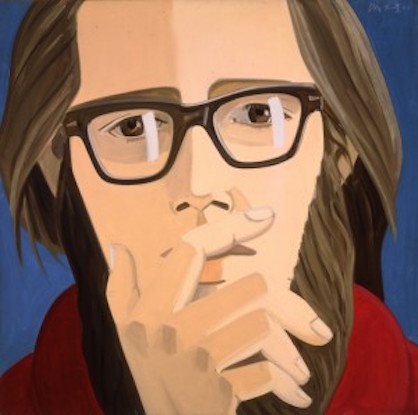

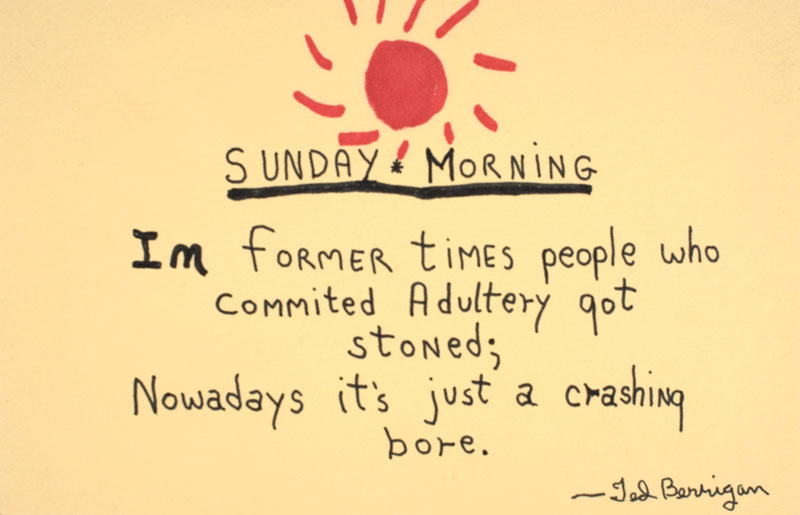
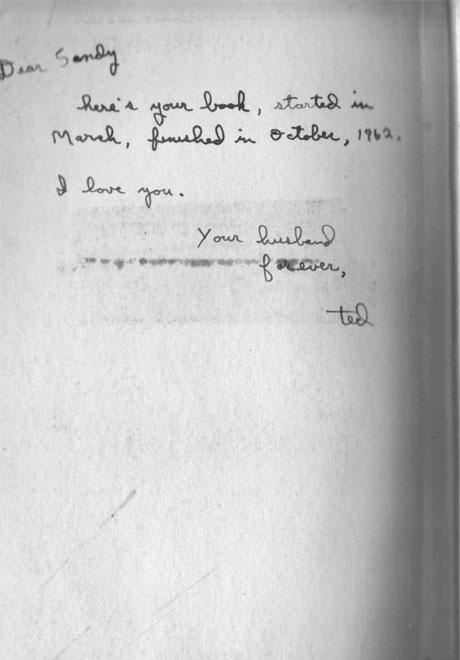
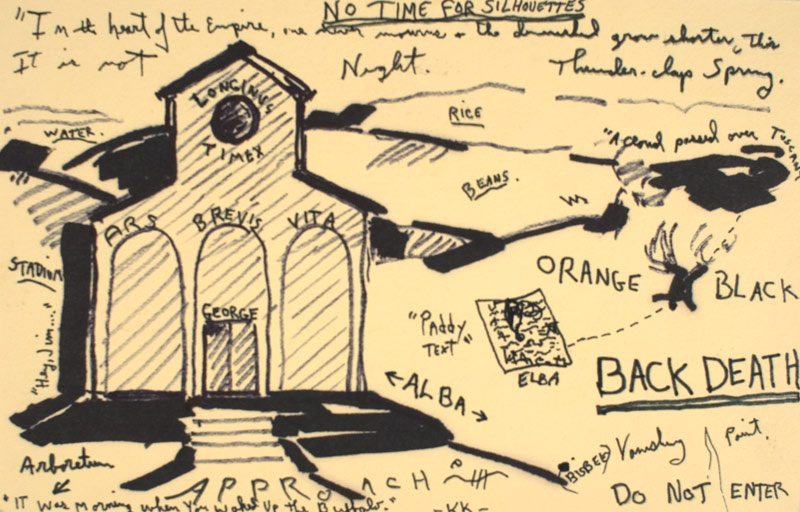
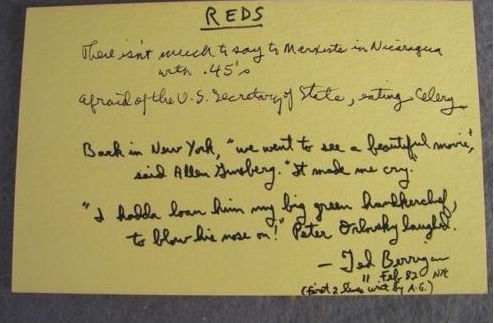

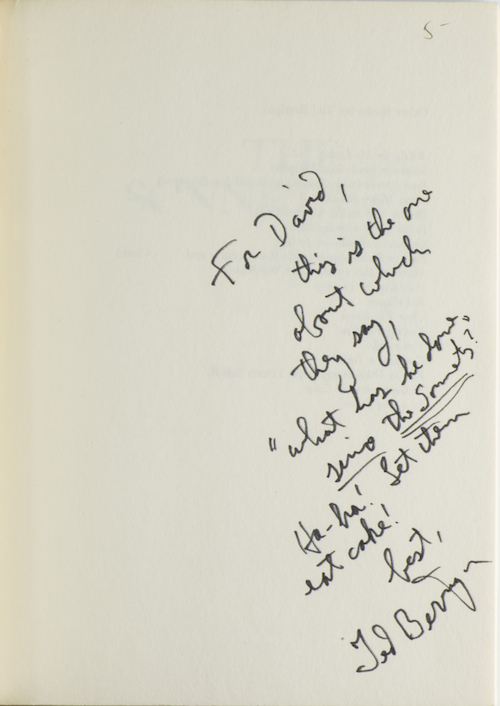

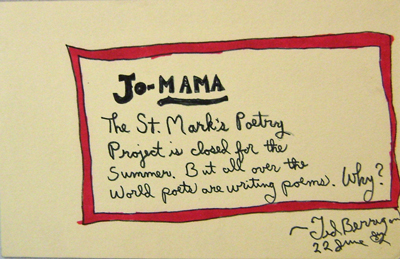
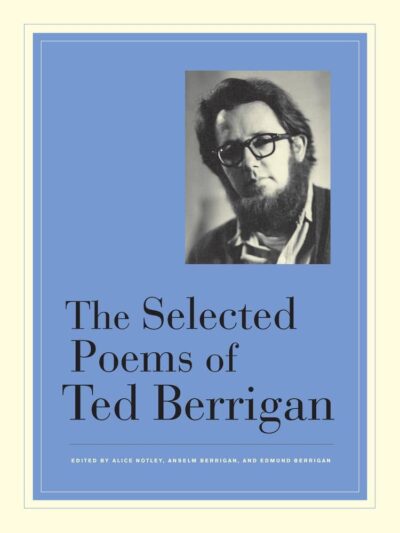 Alice Notley, Anselm & Edmund Berrigan, eds. The Selected Poems of Ted Berrigan
Alice Notley, Anselm & Edmund Berrigan, eds. The Selected Poems of Ted Berrigan



 Now available in North America
Now available in North America 